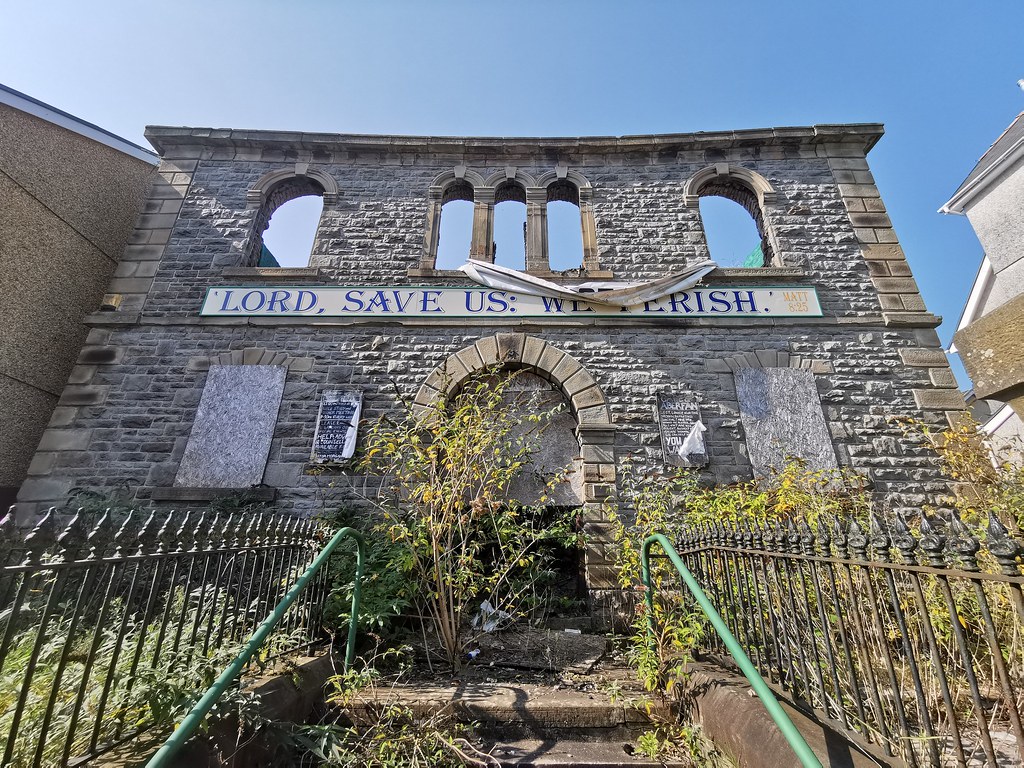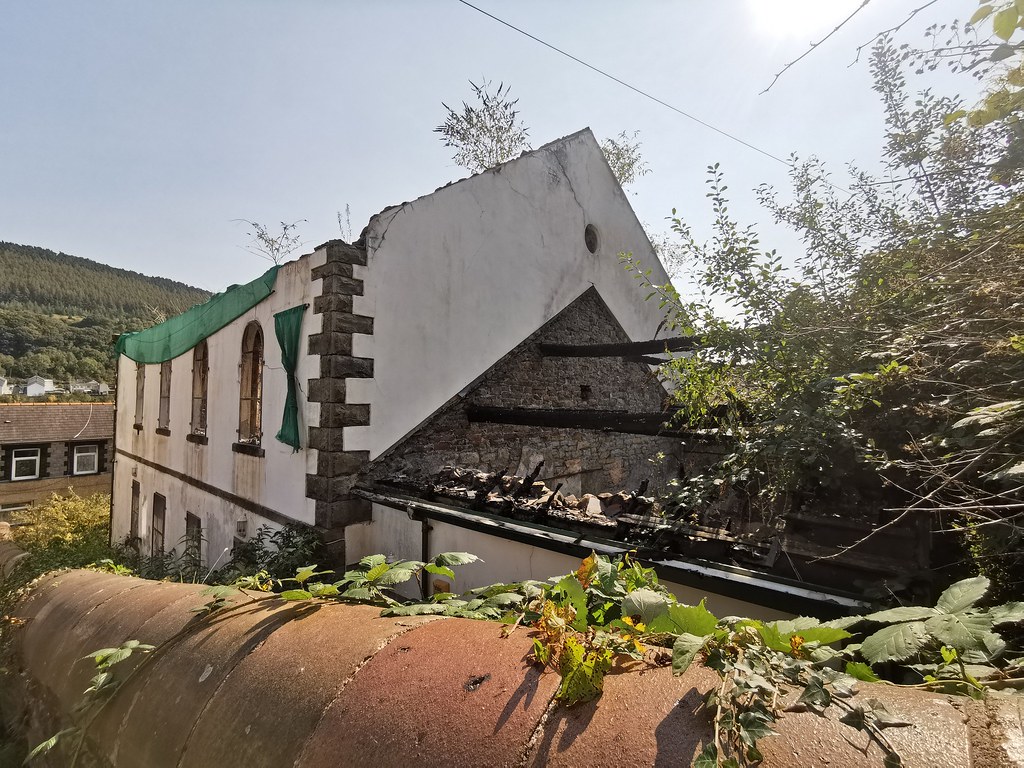
|
|
This isn't my usual sort of post, in that this one is a lot more text-heavy than what there will be in the way of photos.
South Wales was once a major centre for coal mining up until the closure of most of the pits during the 1980s and onwards. All around the landscape there are reminders of what was once the dominant industry, either in the shape of headstocks and winding gears, mine carts dotted around former mining towns as 'art', renovated colliery buildings or, in the pertinent case here, steeply rising hills dotting the landscape above towns created from the waste spoils of the coal mines.
Aberfan was a typical Welsh mining village, most men living in the town would work in the local coal mines as was the case across similar towns and villages across the southern valleys. Merthyr Vale Colliery was sunk in 1869 and at that point the 'village' consisted of two houses and an inn - by 1966 it had grown to a sizeable village of 5000 residents, most of whom were employed in the coal mining industry either directly or indirectly. With mines comes waste spoils, and these spoils were piled up around the outer edges of the villages on the valley slopes - Aberfan had seven spoil tips on it's borders, but by 1966 only tip no.7 was in use. The ground above Aberfan was dotted with natural springs and it was widely known that tips 4, 5 and 7 had all been deposited on areas where these springs were situated - due to the boggy ground tip no.4 had slipped once before in November 1944, stopping around 500ft above the village, and tip no.7 had shifted slightly in May 1963, followed by a more substantial slide in November of that year although the National Coal Board, in charge of the tips, stated it was a 'tailings run off' rather than a slide and it's stability was unaffected.
Aberfan is situated in a valley with a high average annual rainfall and during the first three weeks of October 1966 there was 6.5 inches of rain, half of which fell during the third week. During the night of 20th-21st October, the peak of tip no.7 subsided around 3m, and the rails used to carry carts of waste up the valley fell into the resulting hole. At around 7.30am the movement was discovered by workers on the morning shift who decided to do no further work on the tip that day, and that a new tip would be begun the next week at a location to be decided.
At 9.15am a significant volume of spoil tip waste heavily saturated by water broke free from the slopes of tip no.7 - 110,000 cubic metres of spoil flowed around 640m down the mountain at around 20mph, in waves 20-30ft high. In the subsequent tribunal, a consultant engineer described the movement at 9.15am thus
"The 9.15am movement took part of the saturated material past the point where liquefaction occurred. This initially liquefied material began to move rapidly, releasing energy which liquefied the rest of the saturated portion of the tip, and almost instantaneously the nature of the saturated lower parts of Tip No. 7 was changed from that of a solid to that of a heavy liquid of a density of approximately twice that of water. This was 'the dark glistening wave' which several witnesses saw burst from the bottom of the tip"
It first struck two farm cottages, obliterating them and killing the occupants. Of the initial slide, around 38,000 cubic metres continued downwards, travelling across the canal and into the village itself. As it travelled, the flow destroyed two water mains which further added to the saturation of the spoil. The avalanche of spoil struck Pantglas Junior School, totally demolishing over half the building and filling the rest of the classrooms with a mix of water, spoil and rubble. Children had only just sat down to begin lessons that day, and were caught completely unaware along with their teachers. The avalanche continued, damaging the Secondary school and destroying 18 more houses before finally coming to a halt. After it stopped moving, the waste re-solidified into a heavy mass 30ft deep in places. Inside the school, 109 children and 5 teachers were killed, and overall the disaster claimed a total of 144 lives - 116 children and 28 adults.
Immediately following the disaster a rescue mission was begun, with local residents rushing to the school with hand tools and whatever they could find to dig through the now solidified mass of spoil. Shortly afterwards, emergency services arrived in the town along with civil defence corps and miners from the pits who had been instructed to assist with the digging in case of further collapses. No survivors were pulled out of the rubble after 11am. Because there was such an overwhelming quantity of spoil the last body wasn't recovered until a week later, on October 28th. After the bodies of children were recovered they were moved to makeshift mortuaries at the Bethania Chapel a short distance away from the school as well as Capel Aberfan. The cramped conditions inside the chapels meant that parents were allowed in only one at a time to identify bodies, most of which had been ruled to have died due to asphyxia or multiple crush injuries. Four hundred embalmers volunteered to help with the cleaning and dressing of the bodies, and an entire plane was stripped of it's seats to carry a load of child coffins over from Ireland.
In the tribunal following the disaster, various members of the National Coal Board were deemed to be at fault for allowing the tip to be constructed on natural springs, however not a single person was prosecuted for the disaster. The tribunal made it clear that the fault lay with the NCB as well as other mining organisations and that compensation should be paid to every bereaved family. The report called the construction of colliery spoil tips on areas dotted with springs entirely ignorant, as well as ineptitude on the part of those supposedly overseeing the safety of such tips. Following the tribunal, all the spoil tips above Aberfan were removed at a cost of £850,000, £150,000 of which had come from the disaster fund set up afterwards.
That brings us to the present century. In 2015, a serial arsonist and pyromaniac started a fire inside Capel Aberfan, where he was supposedly working as a cleaner. He set fire to a dust sheet and left, and the resulting fire spread and totally destroyed the building, as well as an Aberfan disaster memorial organ donated by Queen Elizabeth II after the disaster which was so historically significant in the town. Thankfully he was very quickly caught and in 2016 imprisoned for the string of fires he set across the town, and when released he'll be on a monitored license for a decade.


The local residents would love to see the chapel restored, however it will cost hundreds of thousands of pounds to repair it, so for now it sits as an abandoned roofless shell.

|
Add a poll to this thread
This thread is one of your Favourites. Click to make normal.Click to make this thread a Favourite.

| This thread is in a public category, and can't be made private. |
Powered by AvBoard AvBoard version 1.5 alpha
Page Generated In: 31 ms
|
|

